Noah Purifoy's Sophisticated Assemblage

Contrary to what some think when they happen upon Noah Purifoy's Outdoor Museum, 10 acres in the desert of Joshua Tree, the man was not one of those eccentric self-taught artists. True, like some of them, he created from the cast-offs and the detritus of modern society. However, upon closer look, we realize the late artist's elevated skill and inspired inventiveness in making sculpture out of leftover boards and planks, lunch trays, vacuum cleaners, bowling balls, and anything else he could find in bulk and cheaply. There's also marked socio-political consciousness in his work -- Purifoy was a Black man born and raised in the segregated South, Alabama no less, and lived through the 1965 Watts Riots in Los Angeles. In fact, he was well-educated, with degrees in social work and in the fine arts, the latter from the Chouinard Art Institute, and he was the co-founder of the Watts Tower Art Center. "Noah Purifoy: Junk Dada," the stunning exhibition at the Los Angeles County Museum of Art (LACMA) until Sept. 27, reveals his finely tuned artistry, a soulmate to Marcel Duchamp and Louise Nevelson, a man whose creative gifts and spirit of inquiry led him through a series of explorations in art and philosophy.
Organized by LACMA's head of contemporary art Franklin Sirmans and independent curator Yael Lipschutz, the show traces an overall chronology. The first gallery features Purifoy's earliest surviving work -- a whimsical headboard (1958) defined by ellipses. It is pieced together from butcher block, plywood and wood trim, and was his own headboard for many years. Already we see his gift for using objects in a rhythmic and dynamic way, varying shapes and textures, curves and lines, and how to fit them together. In the late 1950s, Purifoy was a commercial artist who worked with interior design and window display, so he practiced woodworking and visual appeal. On a more plaintive note, a tabletop model of his hometown, "Snow Hill" (1989), five foot long and made of painted wood, sits in the middle of the gallery. This is a landscape of poor farmland, with the fields in rectangles of green, orange, yellow, and a river passing through. One simple bridge over that river was probably for cars, and another bridge with steps for pedestrians -- the latter is broken.

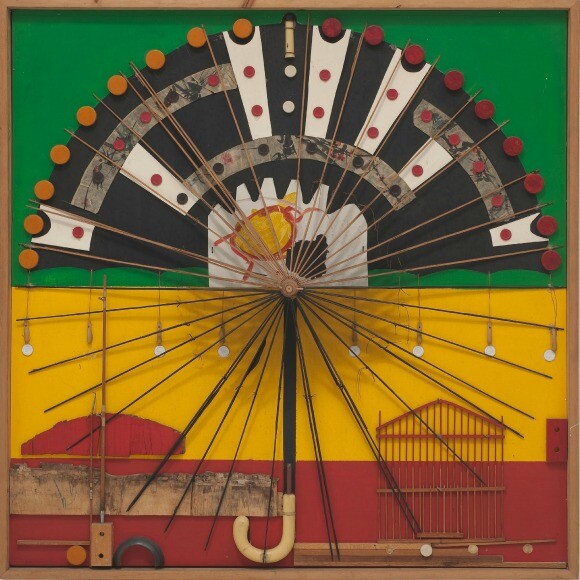
More often than not, it appears that Purifoy started with objects. In L.A. he picked them up off the streets. However, in Joshua Tree, things were constantly recycled, so he had to buy things or get them from people who knew he was on the lookout for "junk." "The object turned me on to an idea," he once said. "And then in the assembly of a single object, I place it on the board in a way that you can't move it. So somehow I'm stuck with that. And then I go around looking for what else goes with what I've got. And finally after a series of looking, I can get them together... and it's what I call assemblage. One of the ways we work is blindly, and we confront problems and resolve them as we go, allowing objects to discover their own relationships."
One work in this gallery echoes Nevelson -- turned and shaped wooden fragments fitted together. Whether he was directly influenced by Nevelson or not, those who knew him knew he was well versed in art history. "One of the things he got out from his education at Chouinard is that art history," says Lipschutz, who met him when she was a teenager. "He had an introduction to Cubism, Dada, Marcel Duchamp. He was influenced by the art of Native Americans, and African art was a touchstone."
Throughout the show, Purifoy's experience as a socially and politically conscious man is expressed. "He was interested in social issues, not only concerning African Americans," says Lipschutz. "He was very much a Universalist." While he did not think of his work as protest art per se, "there are frequent social messages and undercurrents that anchor the work."
In the aftermath of the Watts Rebellion, which he thought rather overdue, Purifoy and fellow artist Judson Powell went into the streets to collect charred debris and melted neon signs to turn into art. With six other artists, they used the material to make sculpture, which went into "66 Signs of Neon," an exhibition which toured nationally. Several works by Purifoy from that show are in the LACMA exhibition. Some works even went to Germany under the auspices of the U. S. Information Agency, and there Purifoy was shown with John Chamberlain, Ed Kienholz, and Robert Rauschenberg.
In the 1970s, Purifoy went back to social work and social policy, and he didn't fully return to art till 1987. By then, he was 70, and collecting a small Social Security. Despite his successes, the art world did not embrace him the way it did other assemblage artists like Kienholz or George Herms -- and 50 years ago his race would have been a major factor in preventing him from getting more traction in his art career. "He was barely getting by," says Lipschutz, "that's why he left." Debby Brewer, an artist who had been in the "66 Signs" show, offered him a place to live in Joshua Tree, and he moved there in 1989. That year he started creating his desert art museum, steadily creating pieces for it for the next five years.
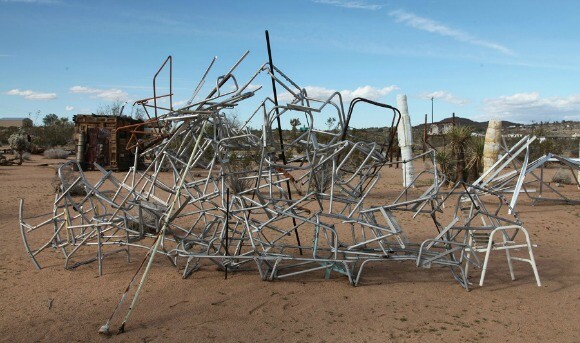
Unlike the work in the Outdoor Museum, much of the work in the LACMA show was meant to be collected and displayed indoors. Many are owned by those who knew him personally. Only a handful are owned by museums, including the Corcoran Gallery of Art in Washington, D.C., the Whitney Museum of American Art in New York, and the California African American Museum in Los Angeles. The Whitney purchased an assemblage from their 1971 group show "Contemporary Black Artists in America." In 1997 CAAM honored Purifoy with his first career survey, "Noah Purifoy: Outside and in the Open."
Of course, Purifoy did not forget his social connections when he went to the desert. In fact, it looks like he had lots of time to reflect on them. "Sir Watts II" (1996) is a metal torso topped with what looks like a Kaiser German helmet, and an incision in the chest showing the electronics board beneath. The title of the multimedia wall work "Strange Fruit" (2002) is taken from a Billie Holiday song, which includes the lyrics, "Black bodies swinging in the Southern breeze / Strange fruit hanging from the poplar trees." Here, a cloud of white feathers has been glued to a black surface, a bucket of paint and paintbrush (actual), hanging from the lower edge -- a reference to the tarring and feathering used to punish African Americans in the past.
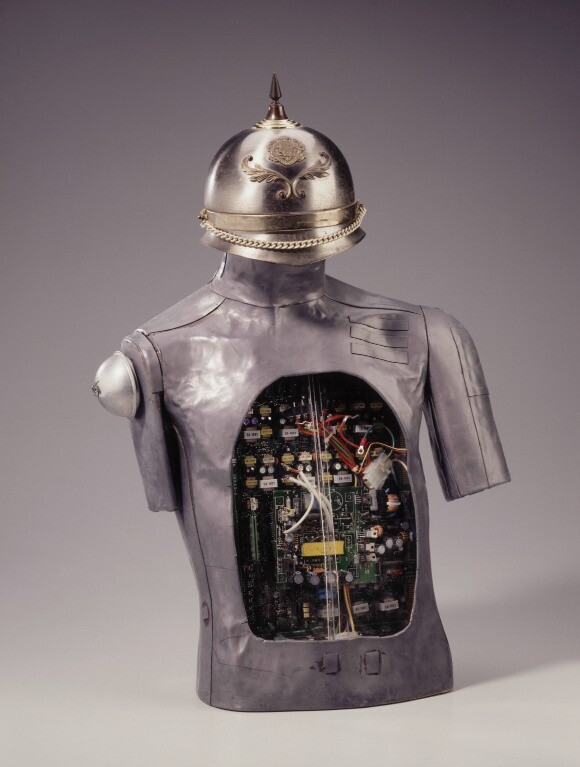
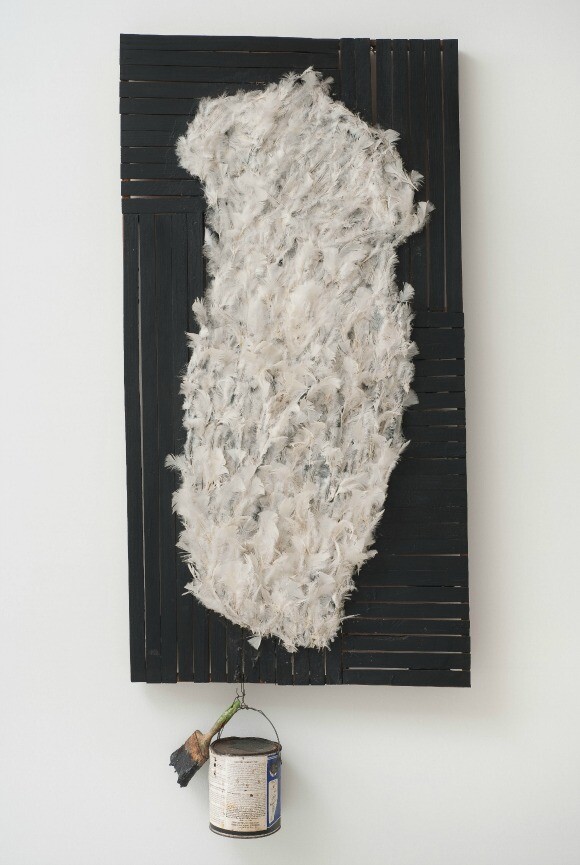
Two galleries at the end of the show feature several large works temporarily brought from the Outdoor Museum. These seem monumental in a contained space. The hint of their origins is in the sandbox-like pedestal they've been placed in. "From the Point of View of the Little People" (1994) is probably Purifoy's most famous construction, often reproduced. It is certainly one of his most poignant and beautiful, I think -- a row of weathered jeans, boy-sized, are "standing" over sneakers and placed in a row on an elevated ramp. This might be another reference to lynching, with the boys standing on the gallows -- a larger piece, "Gallows," is also at Joshua Tree, though sans any human representation. In my mind, "People" is also an acknowledgement of a boy's identity -- his jeans and his shoes. Here the desert climate has collaborated with Purifoy to add to the emotional impact of his art, as the jeans have faded and gotten tattered, and the desiccated shoes turned up at the toes. As Sue Welsh, Purifoy's longtime friend and fellow artist says, about two well-weathered works in the show "Scroll I" and Scroll II," "Originally Noah observed the decay on these forms that he had placed inside his large desert piece called "Collage." He removed the pieces from "Collage" -- the weathering had done the work. That's what he meant by allowing nature to participate in the creative process." Welsh is also key lender to the show.
After Purifoy left Los Angeles, Welsh helped sell the works he left behind, as well as the new works he created in the desert that were portable. "His concept that by taking junk, keeping its originality and making it into something else," she says, "can help make people realize that their junk, their lives, can be shaped into something worthwhile."
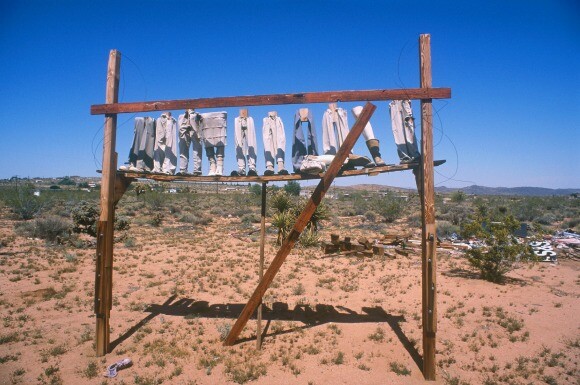
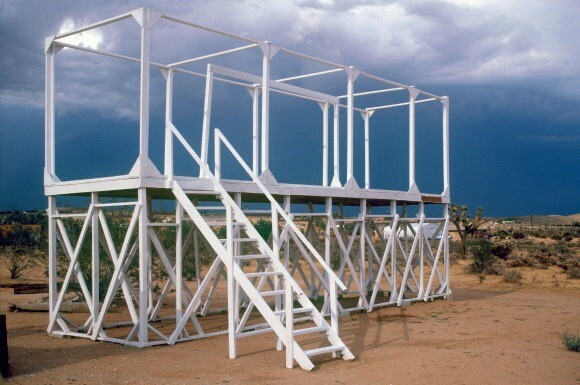
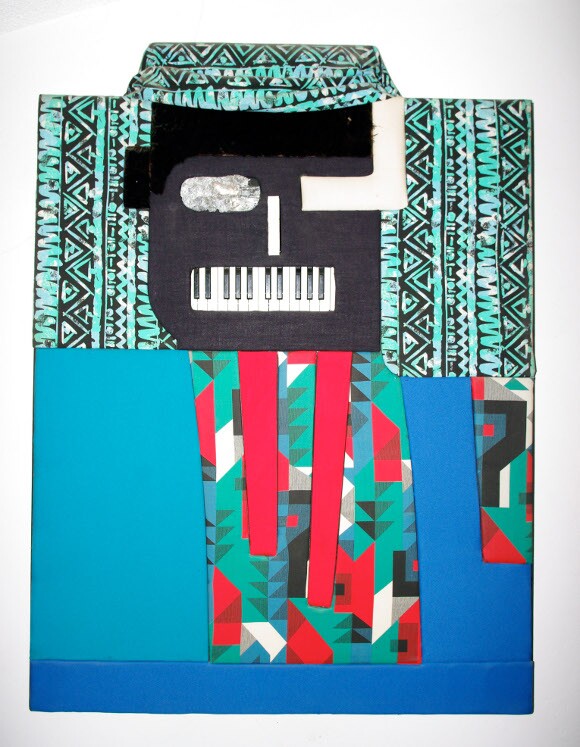
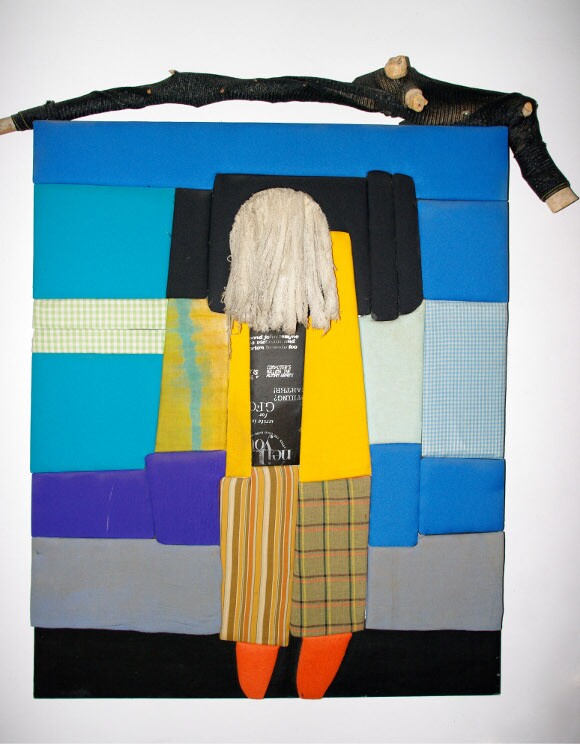
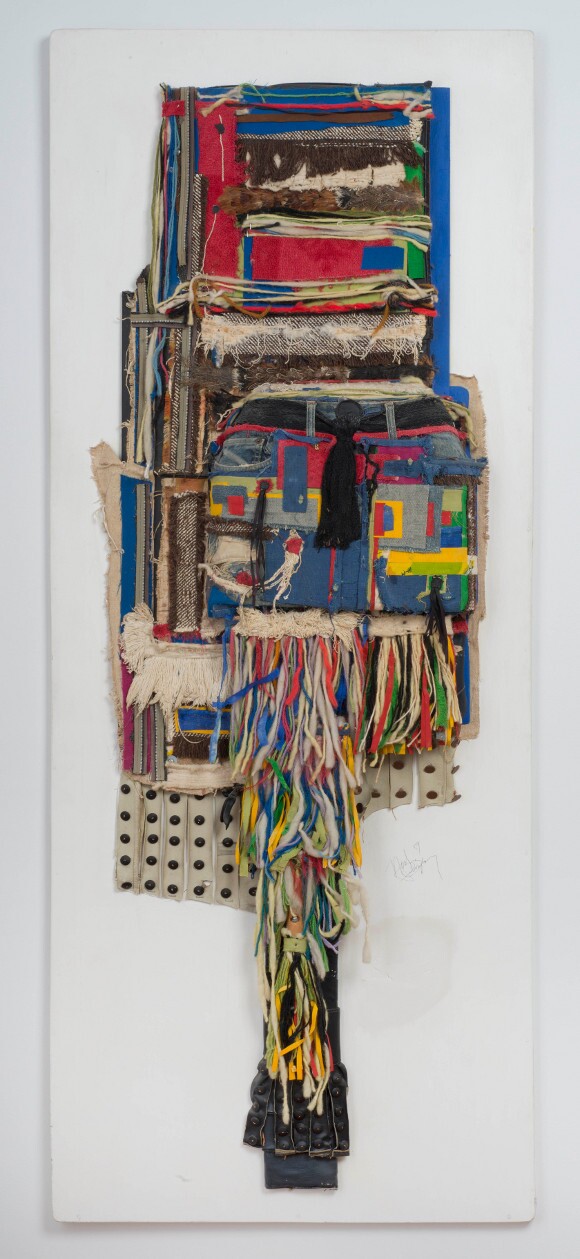
Read more about artist Noah Purifoy:
Assembly Required: The Transformative Art of Noah Purifoy
Noah Purifoy spent the final years of his life in Joshua Tree creating the monumental "Outdoor Desert Art Museum of Assemblage Sculpture" made from tons of discarded materials.
Packrats and Possum Trot: Artists and Collectors of the Desert
A closer look at the collection habits of humans and other species suggest that we are all purveyors and taxonomists of discarded refuse, inorganic or otherwise.
Junk Dada: The Stories Behind Noah Purifoy's Joshua Tree Sculptures
The Noah Purifoy Outdoor Desert Art Museum of Assemblage Sculpture, open to the public, illustrates the artist's vision during the last 15 years of his life.
Dig this story? Sign up for our newsletter to get unique arts & culture stories and videos from across Southern California in your inbox. Also, follow Artbound on Facebook, Twitter, and Youtube.